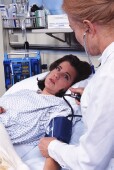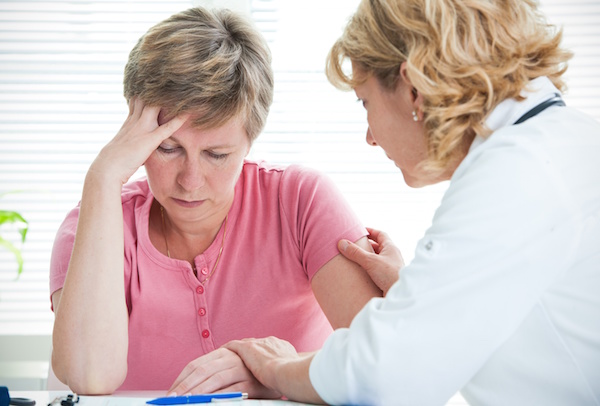
WEDNESDAY, Oct. 30 (HealthDay News) — A diagnosis of cancer may put teens and young adults at risk for suicide, a new study finds.
“There is a need to support and carefully monitor this vulnerable population,” said lead researcher Donghao Lu, from the department of medical epidemiology and biostatistics at the Karolinska Institute in Stockholm, Sweden.
The study of Swedes aged 15 to 30 found that those with a cancer diagnosis had a 60 percent greater risk of suicide or attempted suicide compared to similar young people without cancer. And the risk peaked the first year after diagnosis, when it was 150 percent higher, the researchers found.
“Although the absolute risk of suicidal behavior is small among the young cancer patients, these findings do imply that the young patients suffer from great emotional stress after the diagnosis,” Lu said.
All cancer patients, regardless of age, have an elevated risk of suicide, Lu said. “But because adolescents and young adults are still developing their coping strategies for stress, they may be more affected than adults when facing major adversity such as a cancer diagnosis,” he said.
Whether these findings, published Oct. 30 in the Annals of Oncology, apply to young cancer patients elsewhere is unclear. “Given the fact that the cancer care practice and characteristics of suicidal behavior may be different between Sweden and other countries, it might be a little premature to extend our findings to other populations,” he said.
However, Lu believes there is a need for mental health care for these young cancer patients, particularly those with pre-existing psychiatric conditions or with poor prognosis.
“The best support should be delivered through cooperation among different parties, including the medical professionals, psychological professionals, family members, as well as social workers,” he said.
Lanny Berman, executive director of the American Association of Suicidology, said these findings are not new, “but this is the first study to document that elevated risk among younger populations of patients.”
What is consistent across all the studies in this area, he said, is the increased apprehension, distress, fear and/or terror that comes soon after diagnosis. “Hence the need for significant counsel and support to help adaptation and recovery,” he added.
For the study, Lu’s team collected data on nearly 8 million Swedish males and females who were 15 or older between 1987 and 2009. More than 12,600 were diagnosed with cancer.
During more than 17 years of follow-up on average, almost 106,000 suicides or attempted suicides occurred.
Among cancer patients, 22 killed themselves — more than the 14 expected based on the general population, the researchers noted. And 136 cancer patients attempted suicide, which was more than the 80 attempts expected based on the general population. In total, that’s an extra 64 suicides or attempted suicides among the young cancer patients, the authors concluded.
The risk for suicidal behaviors rose for most cancer diagnoses, but not for thyroid cancer, testicular cancer or melanoma. This might be because these cancers have a better prognosis among the young, the researchers noted.
However, the risk for suicidal behavior was tripled among young females diagnosed with cervical cancer, which is highly treatable when caught early. That risk rose nearly sixfold the first year after diagnosis.
Although more young people with mental problems attempted suicide overall, having cancer didn’t seem to up the risk for these patients.
It’s possible they were undergoing treatment for their mental problem with antidepressants or counseling that helped prevent suicidal behavior, the researchers suggested.
Dr. Christine Moutier, medical director of the American Foundation for Suicide Prevention, said the study shows the need to assess young people diagnosed with cancer for their suicide risk.
“The good news is that mental health problems, in large part, can be improved with treatment,” she said.
According to the study, hanging was the most common method of suicide, and poisoning was the most frequent form of attempted suicide.
More information
For more information on depression and cancer, visit the American Cancer Society.
Copyright © 2025 HealthDay. All rights reserved.

